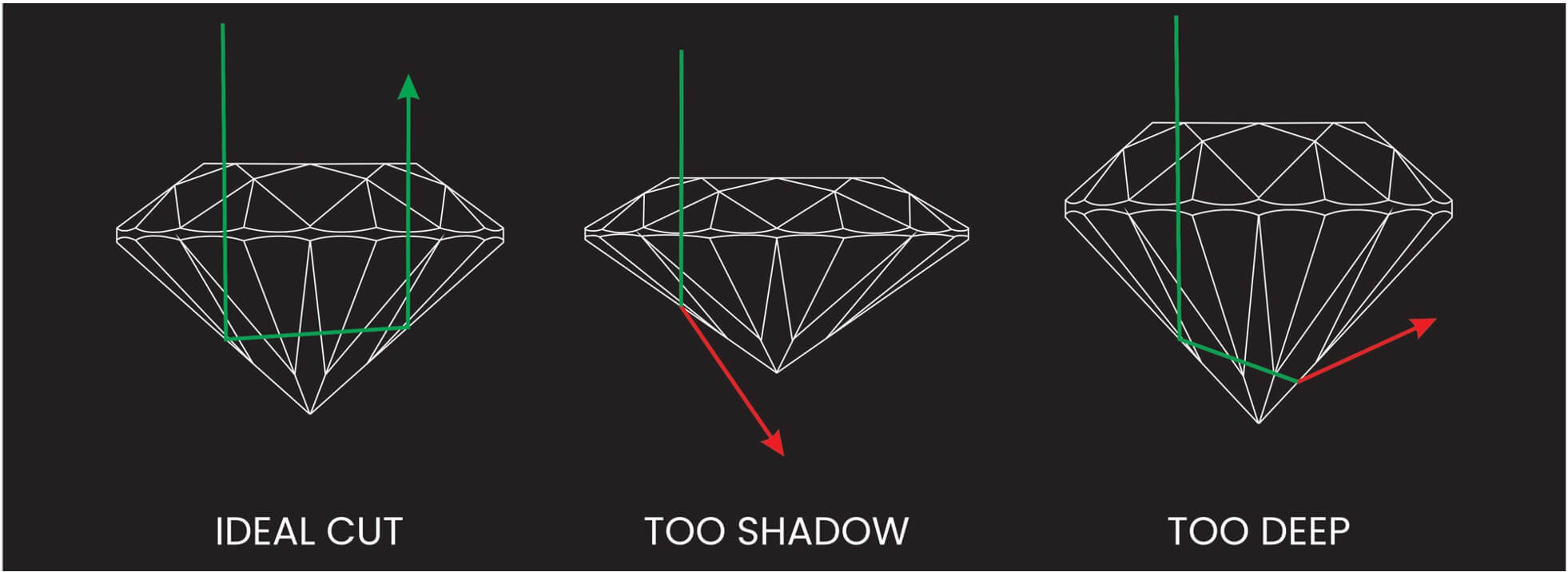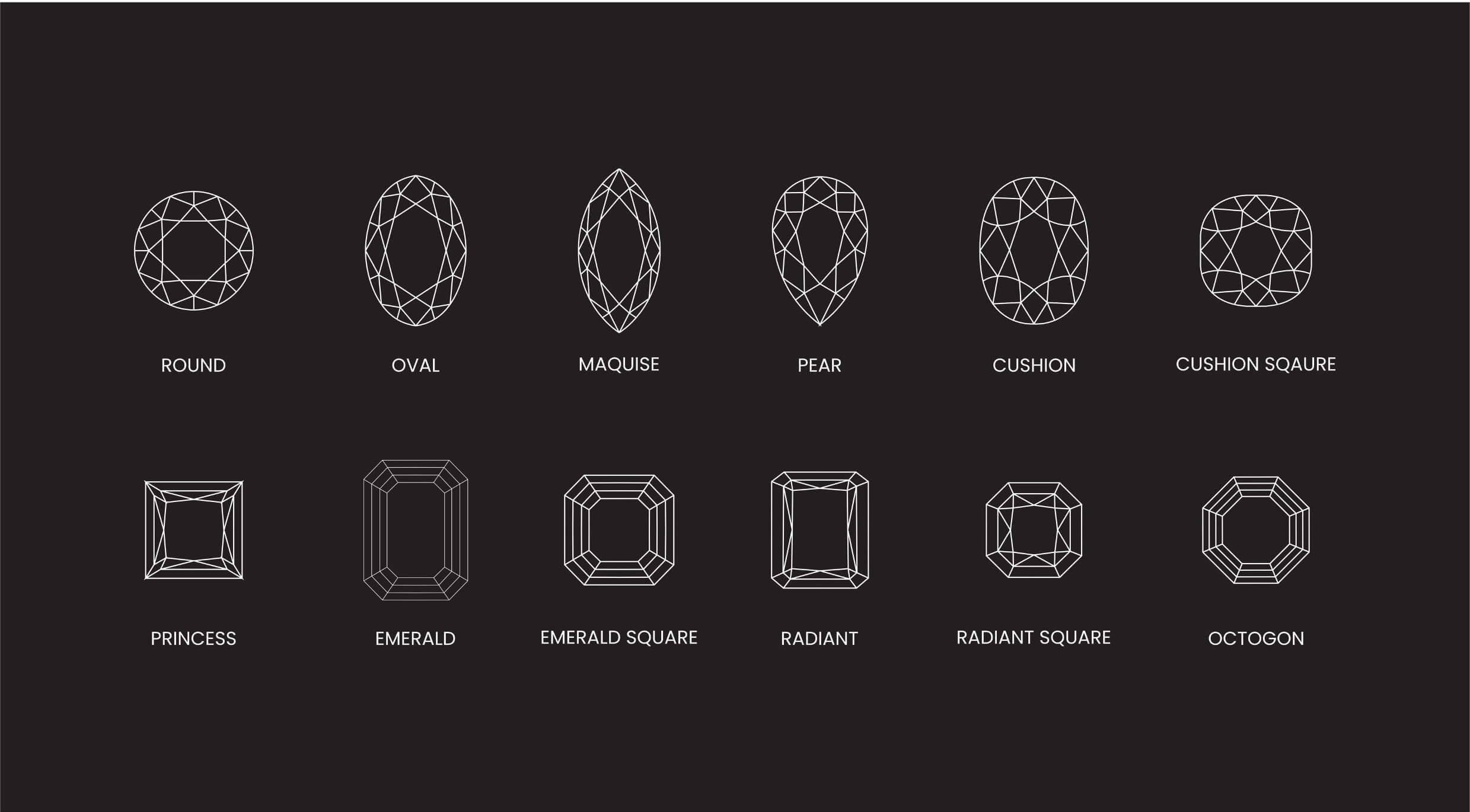The price/quality ratio of diamonds is determined by the four C’s namely Colour (colour), Clarity (clarity), Carat (size) and Cut (shape). The advent of Lab Grown adds a fifth C, namely Competition (competitiveness). The following briefly discusses these five determining factors.
Diamond's Carat
Carat represents the size of a stone and seems to be the most determining factor. Thus, one would think 'the bigger the stone the more expensive it is', but practice tells us that the other three factors are at least as important, if not more important for the value/ pricing of diamonds. However, it can be said that with equal 'other' properties, a larger stone has a greater value. Since larger stones are rarer with Natural diamonds, a stone twice as large with identical properties is worth more than twice as much. Funnily enough, a 2-Carat diamond is not twice the size of a 1-Carat diamond.
A fun fact: The word Carat is the Greek and Arabic name for a John's Bread tree. In the past, the seeds of this tree were used as counterweights for weighing gold, diamonds, precious stones and pearls because of their relatively constant weight. After numerous other developments, this now outdated weighing method has ensured that since 1930 the name Carat has been used as a unit of measurements for diamonds. A metric “carat” is defined as 200 milligrams or one-fifth of a gram.

Diamond's Cut
Cut stands for how a stone is cut. A well-cut stone reflects light better than a poorly cut stone. The cut involves Brightness (Amount of internal & External white light reflecting off the top surface of the diamond), Fire (The scattering of white light into shades of rainbow) and Scintillation (Sparkle of light & contrast). In diamonds, the cut is actually the only factor that humans can really influence. Cut should not be confused with the shape of the stone.
The grade of cut ranges from Excellent, Very Good, Good to Fair. Some certificates even add Ideal for the very best grade of cut. IDEAL can be found on both GIA and GCAL certificates.

Diamond's Colour
The whiter and more colourless a diamond is, the higher its value is. For this reason, a colour scale ranging from Colour D to Z has been introduced in the diamond industry. Natural stones with the colour designation D are very scarce, hence it also fetches the highest price.
In this respect, it is also explainable that the price for Lab Grown with the colour D-F is much lower. It is simply easier to produce a stone with such a colour gradation than to dig one up in a diamond mine.

Diamond's Clarity
During the Natural process of forming a diamond, both imperfections and mineral impurities can form in the crystal structure as a result of enormous pressure and heat. In Natural diamonds, this process occurs at great depth. The degree of purity of a diamond is determined by the degree of impurities. The most common types of impurities/ inclusions in diamonds are plumes and crystals.
Diamonds without abnormalities are very scarce and therefore extremely expensive. The gradation scale on which purity is displayed ranges from FL/IF (very pure) to I3 (impure).

Competitiveness
Sanjoya adds a fifth C to the standard 4 C’s. The fifth factor that matters for pricing is whether the stone is 'Natural' or 'Lab grown' in origin.
The competitive price of Lab grown is structurally much lower than that of Natural diamonds.
Sanjoya distinguishes itself by offering the best and highest quality for diamonds at very competitive prices. Suppose the end consumer has a certain and perhaps limited budget in mind for the purchase of a special piece of jewellery with diamonds. With Lab Grown's distinctive and competitive offer, the purchase of a much larger and probably better quality stone is then suddenly possible.
The choice is yours, 'Natural or affordable'.
Diamonds and Shapes
In what shapes are diamonds available? The most popular diamond shapes include round brilliant, princess, emerald, oval, marquise, pear, cushion, heart, radiant, and asscher cuts.

